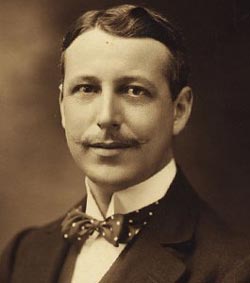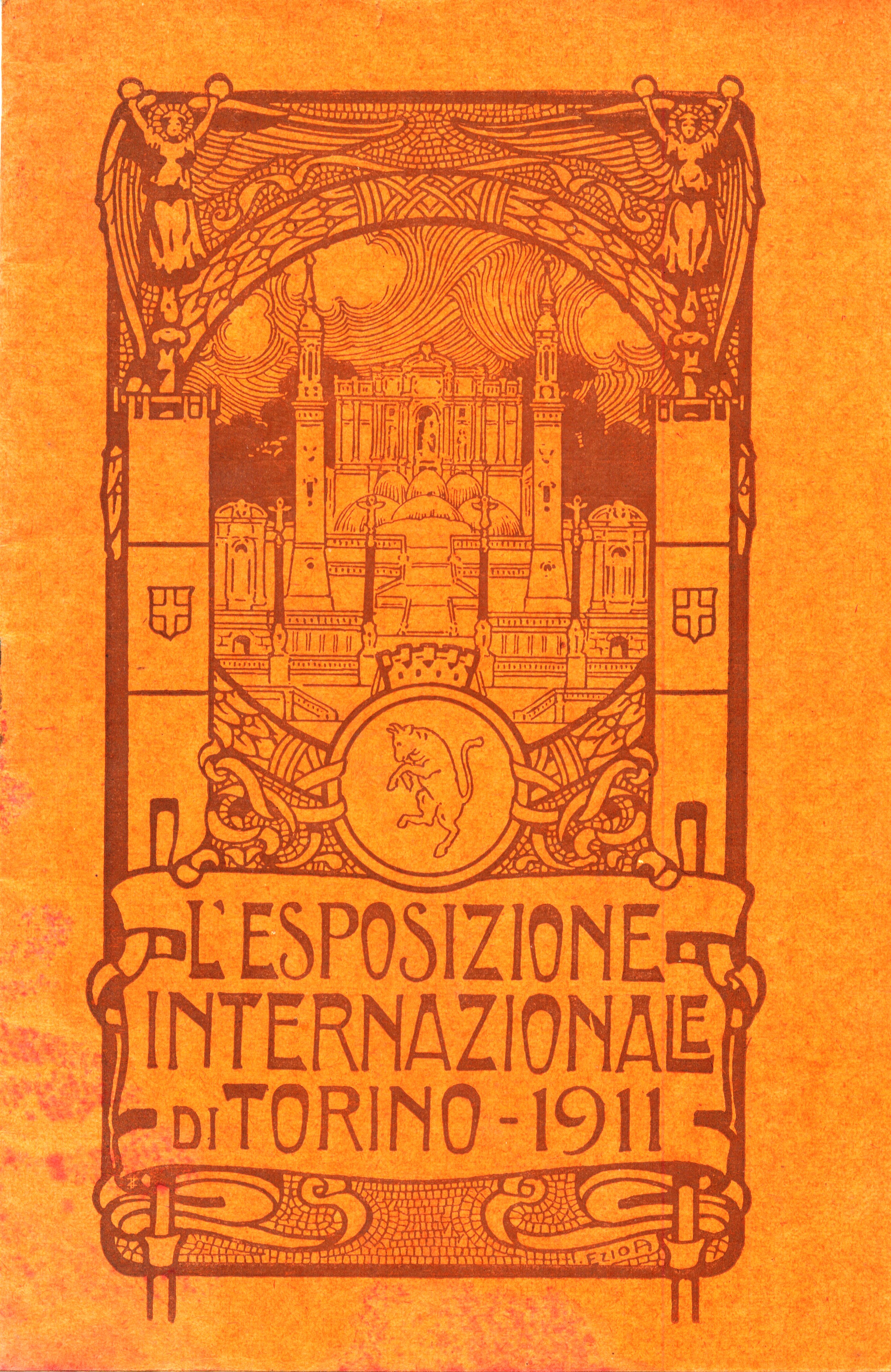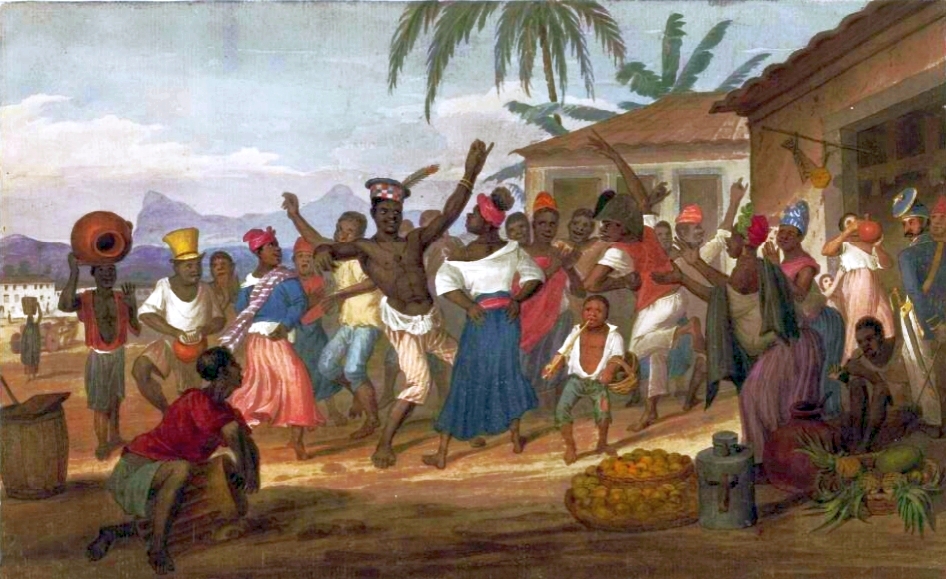|
João Timóteo Da Costa
João Timóteo da Costa (1879 – 20 March 1932) was an Afro-Brazilian painter and decorative artist. Biography He was born in Rio de Janeiro. His brother, Arthur Timótheo da Costa, was also a painter. They initially worked together as apprentices at the Brazilian Mint in Rio de Janeiro, where they designed stamps and created prints. He entered the Escola Nacional de Belas Artes in 1894, where his instructors included Rodolfo Amoedo, João Zeferino da Costa and Daniel Bérard (1846–1910). He participated in the on numerous occasions after 1906, winning several prizes; including the small gold medal. In 1911, together with his brother and the brothers and , he worked on decorating the Brazilian pavilion at the Turin International exhibition, and remained in Italy for more than a year. Among his other notable decorative works were the headquarters of the Fluminense Football Club, the Noble Hall of the Tiradentes Palace and murals at Copacabana Palace Belmond Copacabana Pa ... [...More Info...] [...Related Items...] OR: [Wikipedia] [Google] [Baidu] |
Rodolfo Amoedo - Retrato De João Timóteo Da Costa
Rodolfo is a given name. Notable people with the name include: *Rodolfo (footballer, born 1992), Brazilian footballer Rodolfo José da Silva Bardella * Rodolfo Albano III, Filipino politician * Rodolfo Vera Quizon Sr. (1928-2012), Filipino actor and comedian better known as Dolphy. *Rodolfo Bodipo (born 1977), naturalized Equatoguinean football striker *Rodolfo Dantas Bispo (born 1982), Brazilian footballer * Rodolfo Camacho (born 1975), Colombian road cyclist *Rodolfo Escalera (born 1929), Mexican American Oil Painter who specialized in realism * Rodolfo Fariñas (born 1951), Filipino politician * Rudy Fernández (basketball) (born 1985), Spanish basketball player *Rodolfo Graziani (born 1882), Italian military officer *Rodolfo Jiménez (born 1972), Mexican actor and television host *Rodolfo Landeros Gallegos (born 1931), Mexican politician * Rodolfo Manzo (born 1949), Peruvian footballer * Rodolfo Martín Villa (born 1934), Spanish politician * Rodolfo Massi (born 1965), Italian ... [...More Info...] [...Related Items...] OR: [Wikipedia] [Google] [Baidu] |
Fluminense Football Club
Fluminense Football Club (), known as Fluminense, is a Brazilian sports club best known for its professional football team that competes in the Campeonato Brasileiro Série A, the first tier of Brazilian football and the Campeonato Carioca, the state league of Rio de Janeiro. The club is based in the neighbourhood of Laranjeiras since its foundation, in 1902. Fluminense is the oldest football club of Rio de Janeiro. The club was founded on 21 July 1902 and Oscar Cox was its first elected president. Fluminense have since been crowned national champions four times, most recently in the 2012 Campeonato Brasileiro Série A, the team have also won the 2007 Copa do Brasil, the 1999 Campeonato Brasileiro Série C and the 1952 Intercontinental Cup. In 1949, Fluminense became the first football club in the world to receive the Olympic Cup, awarded annually by the International Olympic Committee to an institution or association with a record of merit and integrity in actively developin ... [...More Info...] [...Related Items...] OR: [Wikipedia] [Google] [Baidu] |
Afro-Brazilian People
Afro-Brazilians ( pt, afro-brasileiros; ) are Brazilians who have predominantly African ancestry (see " preto"). Most members of another group of people, multiracial Brazilians or ''pardos'', may also have a range of degree of African ancestry. Depending on the circumstances (situation, locality, etc.), the ones whose African features are more evident are always or frequently seen by others as "africans" - consequently identifying themselves as such, while the ones for whom this evidence is lesser may not be seen as such as regularly. It is important to note that the term pardo, such as preto, is rarely used outside the census spectrum. Brazilian society has a range of words, including negro itself, to describe multiracial people. Preto and pardo are among five ethnic categories used by the Brazilian Institute of Geography and Statistics, along with '' branco'' ("white"), '' amarelo'' ("yellow", East Asian), and '' indígena'' (Native American). In 2010, 7.6% of the Brazilian pop ... [...More Info...] [...Related Items...] OR: [Wikipedia] [Google] [Baidu] |
Brazilian Painters
Brazilian commonly refers to: * Something of, from or relating to Brazil * Brazilian Portuguese, the dialect of the Portuguese language used mostly in Brazil * Brazilians, the people (citizens) of Brazil, or of Brazilian descent Brazilian may also refer to: Sports * Brazilian football, see football in Brazil * Brazilian jiu-jitsu, a martial art and combat sport system *''The Brazilians'', a nickname for South African football association club Mamelodi Sundowns F.C. due to their soccer kits which resembles that of the Brazilian national team Other uses * Brazilian waxing, a style of Bikini waxing * Brazilian culture, describing the Culture of Brazil * "The Brazilian "The Brazilian" is an instrumental piece by the English band Genesis that concludes their 1986 album '' Invisible Touch''. The song features experimental sounds and effects. The band wrote two instrumental pieces for the album, this and "Do the N ...", a 1986 instrumental by Genesis * Brazilian barbecue, known ... [...More Info...] [...Related Items...] OR: [Wikipedia] [Google] [Baidu] |
1932 Deaths
Year 193 ( CXCIII) was a common year starting on Monday (link will display the full calendar) of the Julian calendar. At the time, it was known as the Year of the Consulship of Sosius and Ericius (or, less frequently, year 946 ''Ab urbe condita''). The denomination 193 for this year has been used since the early medieval period, when the Anno Domini calendar era became the prevalent method in Europe for naming years. Events By place Roman Empire * January 1 – Year of the Five Emperors: The Roman Senate chooses Publius Helvius Pertinax, against his will, to succeed the late Commodus as Emperor. Pertinax is forced to reorganize the handling of finances, which were wrecked under Commodus, to reestablish discipline in the Roman army, and to suspend the food programs established by Trajan, provoking the ire of the Praetorian Guard. * March 28 – Pertinax is assassinated by members of the Praetorian Guard, who storm the imperial palace. The Empire is auctioned off ... [...More Info...] [...Related Items...] OR: [Wikipedia] [Google] [Baidu] |
1879 Births
Events January–March * January 1 – The Specie Resumption Act takes effect. The United States Note is valued the same as gold, for the first time since the American Civil War. * January 11 – The Anglo-Zulu War begins. * January 22 – Anglo-Zulu War – Battle of Isandlwana: A force of 1,200 British soldiers is wiped out by over 20,000 Zulu warriors. * January 23 – Anglo-Zulu War – Battle of Rorke's Drift: Following the previous day's defeat, a smaller British force of 140 successfully repels an attack by 4,000 Zulus. * February 3 – Mosley Street in Newcastle upon Tyne (England) becomes the world's first public highway to be lit by the electric incandescent light bulb invented by Joseph Swan. * February 8 – At a meeting of the Royal Canadian Institute, engineer and inventor Sandford Fleming first proposes the global adoption of standard time. * March 3 – United States Geological Survey is founded. * March 11 – Th ... [...More Info...] [...Related Items...] OR: [Wikipedia] [Google] [Baidu] |
Copacabana Palace
Belmond Copacabana Palace, better known as simply Copacabana Palace, is a hotel in the city of Rio de Janeiro, Brazil, facing Copacabana beach. Designed by French architect Joseph Gire, it was built in a style that follows the line and model of the great beach hotels of the nineteenth and early twentieth centuries, and opened on August 13, 1923. With almost a century of existence, Belmond Copacabana Palace continues to be one of the most important hotel complexes in the city of Rio, and in Brazil, with two hundred and forty-three rooms (116 apartments and 127 suites), divided between the main and the annex building, in an area of twelve thousand square meters. Belmond Copacabana Palace is known throughout Brazil for the international celebrities who stay at the hotel when visiting the city of Rio de Janeiro. Some famous guests include Walt Disney, Marlene Dietrich, Ginger Rogers, Brigitte Bardot, Jayne Mansfield, Paul McCartney, Janis Joplin, Madonna, Mick Jagger, Princess Diana, ... [...More Info...] [...Related Items...] OR: [Wikipedia] [Google] [Baidu] |
Tiradentes Palace
The Tiradentes Palace ( pt, Palácio Tiradentes), was inaugurated on 6 May 1926 and is located in the Centro neighborhood ('' bairro''), next to the Paço Imperial in Rio de Janeiro, Brazil. It was the former seat of the Chamber of Deputies of Brazil, between 1926 and 1960, and is the current seat of the Legislative Assembly of the State of Rio de Janeiro. History First building The Tiradentes Palace replaced another building that once occupied the same spot. The construction of the first building, called ''Casa de Câmara e Cadeia'' (literally: House of Chamber and Jail), was requested by the local government of Rio de Janeiro in 1631. It was built in 1640 and housed the three aldermans of Rio de Janeiro and a jail. They were elected by indirect vote, for a one year term, and took care of the city's finances. The aldermans worked on the upper floor while the jail functioned on the lower one. As time passed the building became known as ''Cadeia Velha'' (Old Jail). It was in ... [...More Info...] [...Related Items...] OR: [Wikipedia] [Google] [Baidu] |
Turin International
The Turin International was a world's fair held in Turin in 1911 titled ''Esposizione internazionale dell'industria e del lavoro''. It received 7,409,145 visits and covered 247 acres. Summary The fair opened on 29 April, was held just nine years after an earlier Turin fair which had focused on the decorative arts, and at the same time as another Italian fair in Rome, also with an arts focus. This fair deliberately distinguished itself by focusing on industry and labour. The fair was held in the Parco del Valentino (as were the three previous Turin fairs in 1884, 1885 and 1902 and the subsequent 1924 Turin fair). Participants Participating countries were Argentina, Austria, Belgium, Bolivia, Brazil, Bulgaria, Chile, China, Colombia, Denmark, Ecuador, France, Germany, Greece, Hungary, Italy, Japan, Mexico, Netherlands, Nicaragua, Peru, Russia, Serbia, Siam, Spain, Switzerland, Turkey, United Kingdom, United States and Uruguay. National pavilions The Art Nouveau Hungarian pa ... [...More Info...] [...Related Items...] OR: [Wikipedia] [Google] [Baidu] |
Afro-Brazilian
Afro-Brazilians ( pt, afro-brasileiros; ) are Brazilians who have predominantly African ancestry (see "Black people#Brazil, preto"). Most members of another group of people, Pardo Brazilians, multiracial Brazilians or ''pardos'', may also have a range of degree of African ancestry. Depending on the circumstances (situation, locality, etc.), the ones whose African features are more evident are always or frequently seen by others as "africans" - consequently identifying themselves as such, while the ones for whom this evidence is lesser may not be seen as such as regularly. It is important to note that the term pardo, such as preto, is rarely used outside the census spectrum. Brazilian society has a range of words, including negro itself, to describe multiracial people. Preto and pardo are among five ethnic categories used by the Brazilian Institute of Geography and Statistics, along with ''White Brazilians, branco'' ("white"), ''Asian Brazilians, amarelo'' ("yellow", East Asian), a ... [...More Info...] [...Related Items...] OR: [Wikipedia] [Google] [Baidu] |
João Zeferino Da Costa
João Zeferino da Costa (August 25, 1840 – August 24, 1915) was a Brazilian painter and designer. Life and work He began his studies in 1857 at the Academia Imperial de Belas Artes (AIBA) under the direction of Victor Meirelles.Itaú Cultural Enciclopédia Brief biography and criticism. While there, he won several awards and was granted a fellowship to study in Europe. In 1869, he went to Rome and enrolled at the , becoming a student of . He studied there for three years, winning seve ... [...More Info...] [...Related Items...] OR: [Wikipedia] [Google] [Baidu] |
Rodolfo Amoedo
Rodolfo Amoedo (11 December 1857 – 31 May 1941) was a Brazilian painter, designer and decorator. Biography His interest in art and decoration began when a family friend (who was a lyricist) invited him to do work on the now defunct Teatro São Pedro. In 1873, he enrolled at the "", where he studied with Victor Meirelles. The following year, he transferred to the Academia Imperial de Belas Artes. His teachers there included João Zeferino da Costa, Agostinho José da Mota and the sculptor Francisco Manuel Chaves Pinheiro. In 1878, his painting on the "Sacrifice of Abel" narrowly won him a travel fellowship to study in Europe. From 1879 to 1887, he lived and studied in Paris. Initially, he attended the Académie Julian, but finally managed to enroll at the École des Beaux-arts in 1880, where he received the guidance of Alexandre Cabanel, Paul Baudry and Puvis de Chavannes. From 1882 to 1884, he participated in the Salon while developing his primary themes of mythology, Bibl ... [...More Info...] [...Related Items...] OR: [Wikipedia] [Google] [Baidu] |







